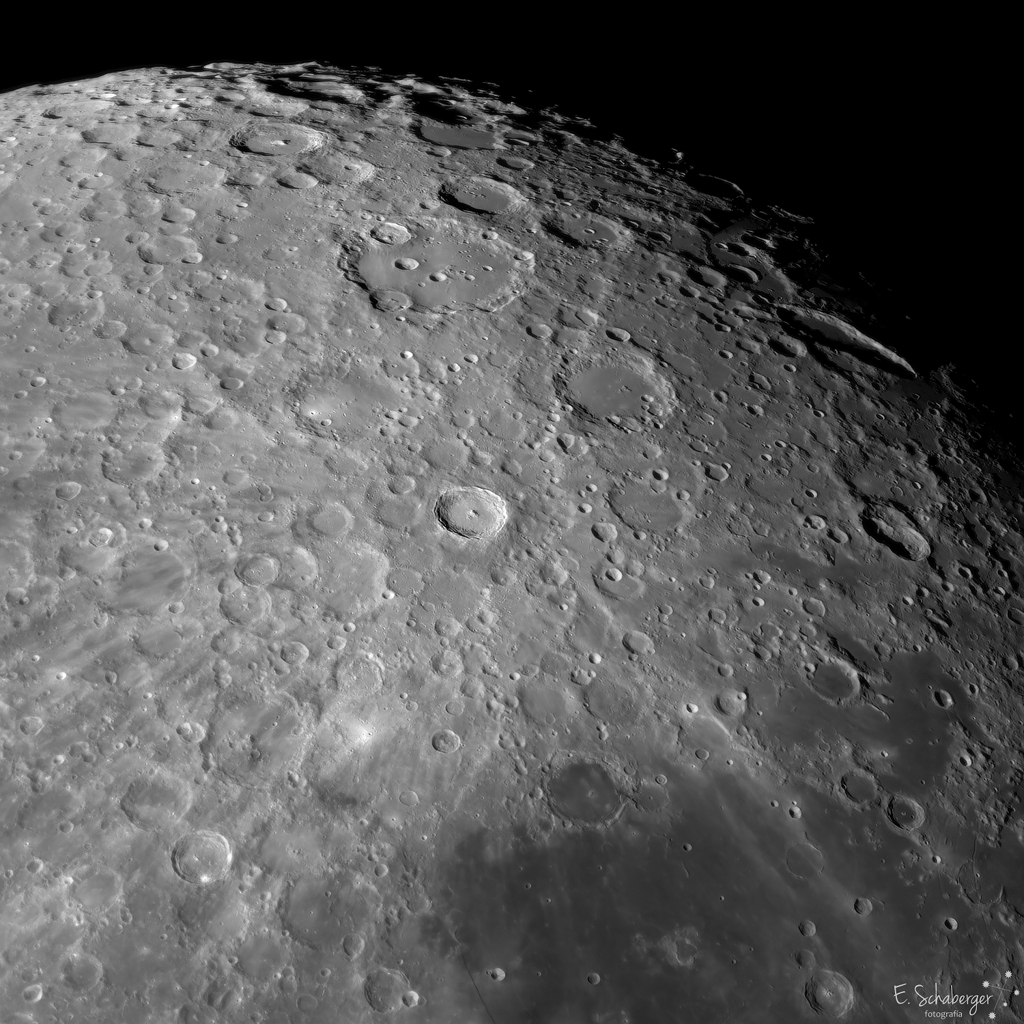2021年8月5日
Tycho and Clavius
Image Credit & Copyright: Eduardo Schaberger Poupeau
Explanation: South is up in this detailed telescopic view across the Moon’s rugged southern highlands. Captured on July 20, the lunar landscape features the Moon’s young and old, the large craters Tycho and Clavius. About 100 million years young, Tycho is the sharp-walled 85 kilometer diameter crater near center, its 2 kilometer tall central peak in bright sunlight and dark shadow. Debris ejected during the impact that created Tycho still make it the stand out lunar crater when the Moon is near full, producing a highly visible radiating system of light streaks, bright rays that extend across much of the lunar near side. In fact, some of the material collected at the Apollo 17 landing site, about 2,000 kilometers away, likely originated from the Tycho impact. One of the oldest and largest craters on the Moon’s near side, 225 kilometer diameter Clavius is due south (above) of Tycho. Clavius crater’s own ray system resulting from its original impact event would have faded long ago. The old crater’s worn walls and smooth floor are now overlayed by smaller craters from impacts that occurred after Clavius was formed. Observations by the Stratospheric Observatory for Infrared Astronomy (SOFIA) published in 2020 found water at Clavius. Of course both young Tycho and old Clavius craters are lunar locations in the science fiction epic 2001: A Space Odyssey.
Tomorrow’s picture: stars and dust
第谷与克拉维乌斯环形山
影像提供与版权: Eduardo Schaberger Poupeau
说明: 在这幅月球崎岖南方高原的细致望远镜影像里,上方是南方。这片摄于7月20日的月面景观,呈现了第谷和克拉维乌斯这二个月球年轻和年老的撞击坑。稚龄约1亿年的第谷坑,是影像中心附近有尖耸坑墙、宽85公里的环形山,而它2公里高的中心峰,则沐浴在明亮的阳光里并投下暗影。在月亮接近满相的期间,产生第谷坑的撞击喷溅出之碎片,所形成的明亮辐线系统清楚可辨,并广及大半的月球正面。事实上,虽然阿波罗17号的著陆点远在2,000公里之外,但集自该处的月面物质,可能是源自造就第谷坑的撞击事件。第谷坑南方(影像上方)、225公里宽的克拉维乌斯坑,是月球正面最古老最大的环形山之一。不过,造成克拉维乌斯坑的撞击所产生之辐线系统,在很久以前即已消褪不可再见。这个古老撞击坑的消蚀坑墙和平滑坑底上头,叠着克拉维乌斯坑形成后,后续才发生的撞击所产生的较小环形山。根据同温层红外线天文台(SOFIA)观测所发表的2020年论文,指出克拉维乌斯坑有水。除此之外,年轻的第谷坑和古老的克拉维乌斯坑,都是科幻电影《2001太空漫游》里的月面基地。
明日的图片: stars and dust



